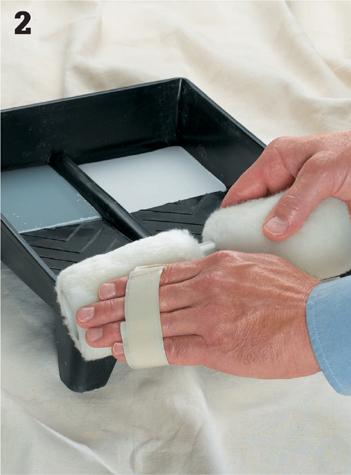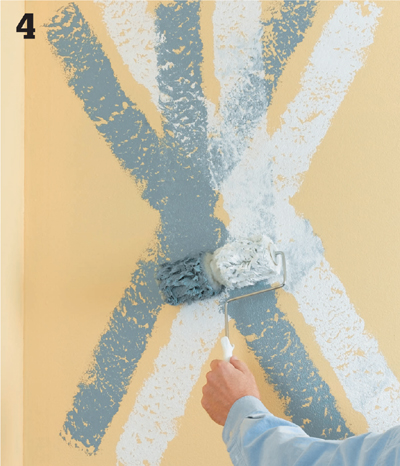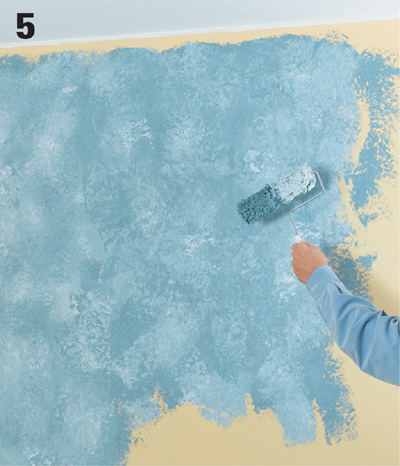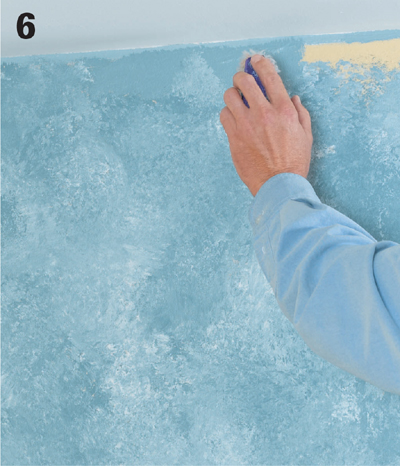 12. Two-Color Meshing
12. Two-Color Meshing 12. Two-Color Meshing
12. Two-Color MeshingDozens of techniques can be used to produce interesting textured surfaces, but most require several steps. With this technique, you can create lovely color variations in only one step. It’s quick and easy enough for any beginner.
This technique is designed to be used with satin-finish, standard latex paints—no glazes are necessary. In fact, glazes are not compatible with this technique.
When choosing paint, start by choosing your lightest color, and then find a second color that is three to five shades darker than the first. Colors that are three shades apart produce muted variations, while colors that are five shades apart produce more dramatic textures.
 How to Apply Meshed Color
How to Apply Meshed Color
Select two colors of satin-finish latex paint, one color three-to-five shades darker than the other. Stir the paint well, then pour each color into one compartment of a divided paint tray.

Remove any lint from the paint roller by patting it with the sticky side of masking tape. Change the tape when it loses its stickiness, and continue patting until no more lint comes off the roller. Dampen the roller with water and thoroughly wring it out.
Roll the two-color roller into the paint and run it up and down the textured portion of the tray several times. Make sure the roller is loaded well, but not so full that it will drip.

Make a diagonal sweep about two feet long, rolling slowly enough to avoid splatters. Make a second diagonal sweep in the opposite direction, then a third, sweep vertical.

Draw the roller in a back and forth motion until the colors are blended to your satisfaction.

At the edges and in corners, apply ample splotches of each paint color, using a 1" brush. Immediately pat the paint with the accessory pad to blend the colors to match the surrounding area.